Castanopsis chestnut, White oak
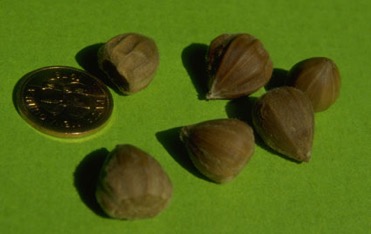
A tropical plant. It occurs throughout much of Papua New Guinea and can form pure stands in lower mountain rainforest between 500 and 2,000 m altitude. The most common place is between 1,100 and 2,300 metres above sea level but they can occur down to 500 metres in many places and are at the sea level. Often these chestnut trees are more common on the boundary between the grassland and the forest. They form a thick covering of leaves which stops many smaller plants from growing underneath. As well they commonly grow in groups or clumps made up only of chestnut trees. From planes, these Castanopsis forests can be picked out because they have a distinctive yellowish brown colour. Under the trees there is usually a thick layer of fallen leaves.
Also known as:
Bai, Berangan pipit, Berangan, Dame gurego, Empili, Fidaawee, Gon, Gor, Ka wongo, Ko duel, Kogopon, Mempening, Pai, Pe, Pohon berangan, Pohon pasang putih, Ukam
Synonyms
- Castanea acuminatissima Blume
- Castanea sessilifolia Blume
- Castanopsis bejaudii A.Camus
- Castanopsis junghuhnii (Miq.) Markgr.
- Castanopsis longispicata Hu
- Castanopsis nebularum Hickel & A. Camus
- Castanopsis schlenkerae Bailey
- Castanopsis sessilifolia A. DC.
- Pasania acuminatissima (Blume) Oerst.
- Quercus fagiformis Jungh.
- Quercus junghuhnii Miq.
- Quercus lineata Miq.
- Quercus varingaefolia Miq.
- Synaedrys acuminatissima (Blume) Koidz.
- Synaedrys fagiformis (Jungh.) Koidzumi
Edible Portion
- Nuts
Where does Castanopsis chestnut grow?
Found in: Asia, Bangladesh, China, India, Indochina, Indonesia, Japan, Laos, Malaysia, Myanmar, Pacific, Papua New Guinea, PNG, SE Asia, Solomon Islands, Taiwan, Thailand, Vietnam
Notes: There are 137 Castanopsis species. 59 have been recorded as having edible nuts. The timber is a useful timber to build with.
Status: A fairly common nut tree in most highland areas of Papua New Guinea, but more important in some areas. It is cultivated.
Growing Castanopsis chestnut, White oak
Cultivation: The seeds grow easily. Self sown plants can often be found under large trees. These can be transplanted to where you want to grow a tree. A nursery can be used by planting some seeds and then transplanting them when they are big enough. Although suckers are common near the base of trees they do not grow easily. Pollination is most probably by wind.
Edible Uses: The seeds are eaten preferably after cooking. They are boiled. CAUTION Mouth ulcers and anaemia have been reported from eating large numbers of raw nuts. It is therefore safest to cook them. Small numbers of the nuts are eaten raw by children. Mostly the nuts are cooked and eaten. If small amounts are available they are boiled in a container. If large quantities are available they are cooked in earth ovens. Cooked they taste like rice. Pigs readily consume the nuts so people take their pigs out and tie them up under the trees in the bush during the nut season.
Production: Nut production is seasonal. Large numbers of nuts are produced in a good season. The nut is about 1.5 cm long and pointed at the end. A nut is quite small. One nut weighs about 1 gm and the edible seed inside weighs about 0.5g.
Nutrition Info
per 100g edible portion| Edible Part | Energy (kcal) | Protein (g) | Iron (mg) | Vitamin A (ug) | Vitamin c (mg) | Zinc (mg) | % Water |
|---|---|---|---|---|---|---|---|
| Nuts | - | - | - | - | - | - |
Castanopsis chestnut, White oak Photos

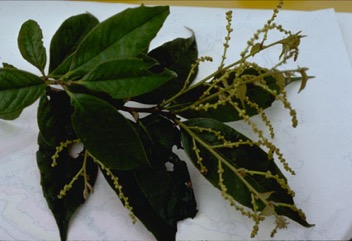
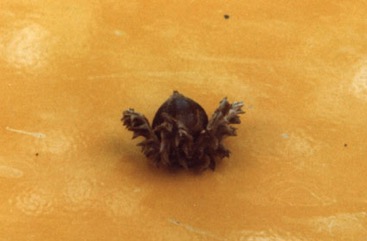
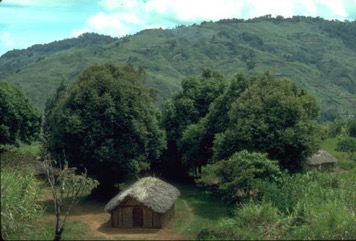
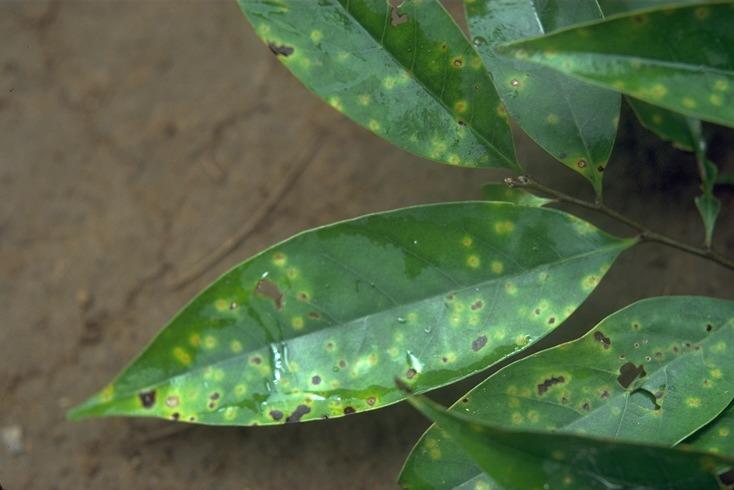
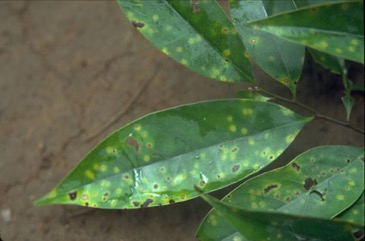
References
Castanopsis chestnut references
Anderson, E. F., 1993, Plants and people of the Golden Triangle. Dioscorides Press. p 205
Bailey, ,1909, Castanopsis schlenkerae in Queensland Agr. J. 22:149
Blume, ,1850, Mus. Bot.1:283.
Bourke, R. M., Altitudinal limits of 230 economic crop species in Papua New Guinea. Terra australis 32.
Castillo, C., 2013, The Archaeobotany of Khao Sam Kaeo and Phu Khao Thong: The Agriculture of Late Prehistoric Southern Thailand. Ph. D. thesis University College, London
De Candolle, A.,1863, J.Bot. 1:283.
Evans, B. R, 1999, Edible nut Trees in Solomon Islands. A variety collection of Canarium, Terminalia and Barringtonia. ACIAR Technical Report No. 44 96pp
French, B.R., 1986, Food Plants of Papua New Guinea, A Compendium. Asia Pacific Science Foundation p 173
Hartley, T.C., 1973, A Survey of New Guinea Plants for Alkaloids. Lloydia 36(3):240.
Havel, J.J., 1975, Forest Botany, Volume 3 Part 2 Botanical taxonomy. Papua New Guinea Department of Forests, p 39
Henty, T.,1980, in Bourke, M., (ed.), 1982, Proc. 2nd PNG Food Crops Conference.
Henty, E.E., 1980, Harmful Plants in Papua New Guinea. Botany Bulletin No 12. Division Botany, Lae, Papua New Guinea. p 62, 63
Hide, R., et al, 1979, A checklist of some plants in the territory of the Sinasina Nimai (Simbai Province, Papua New Guinea), with notes on their uses. Department Anthropology, University of Aukland
Hoare, A., 2003, Food use of the Lundayeh SW Sabah. Borneo Research Council.
Jacquat, C., 1990, Plants from the Markets of Thailand. D.K. Book House p 64
J. Bot. 1:182. 1863
Menninger, E.A., 1977, Edible Nuts of the World. Horticultural Books. Florida p 16
Powell, J.M., Ethnobotany. In Paijmans, K., 1976, New Guinea Vegetation. Australian National University Press. p 108
Sillitoe, P. 1995, An Ethnobotanical Account of the Plant Resources of the Wola Region, Southern Highlands Province, Papua New Guinea. J. Ethnobiol. 15(2): 201-235
Slik, F., www.asianplant.net
Soepadmo, ,1968, Malesian Castanopsis. Reinwardtia Vol.7:385-387.
Soepadmo, E. and Saw, L. G., 2000, Tree Flora of Sabah and Sarawak. Forestry Malaysia. Volume Three. p 5
Sukarya, D. G., (Ed.) 2013, 3,500 Plant Species of the Botanic Gardens of Indonesia. LIPI p 482 (As Quercus acuminatissima)
Suksri, S., et al, 2005, Ethnobotany in Bung Khong Long Non-Hunting Area, Northeast Thailand. Kasetsart J., (Nat. Sci) 39: 519-533
Walter, A. & Sam C., 2002, Fruits of Oceania. ACIAR Monograph No. 85. Canberra. p 136
Wickens, G.E., 1995, Edible Nuts. FAO Non-wood forest products. FAO, Rome. p 122
World Checklist of Useful Plant Species 2020. Royal Botanic Gardens, Kew